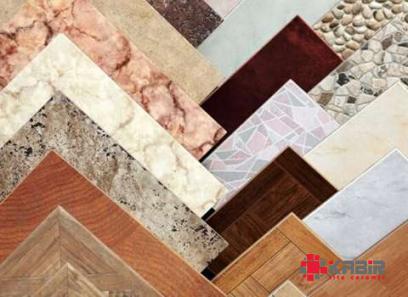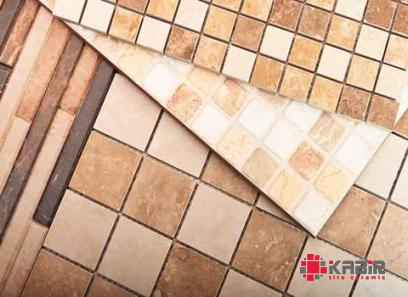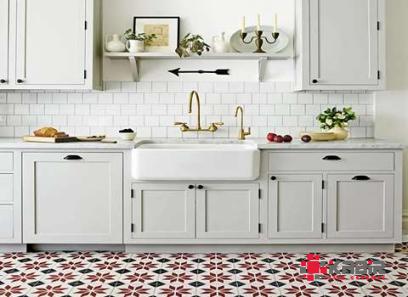When it comes to flooring options, ceramic tiles have long been a popular choice for homeowners and designers alike. Known for their durability, versatility, and timeless appeal, floor ceramic tiles can transform any space into a stunning and functional environment. In this comprehensive guide, we will explore the various types of floor ceramic tiles available, the installation process, and essential maintenance tips to keep your floors looking pristine for years to come. Types of Floor Ceramic Tiles: Ceramic tiles come in a wide range of types, each offering unique characteristics and aesthetics. Understanding the differences between these types can help you make an informed decision when selecting the perfect ceramic tile for your space.

.
 1. Porcelain Tiles: Porcelain tiles are a type of ceramic tile that is known for its exceptional durability and water-resistant properties. Made from finely-ground clay, sand, and other natural materials, porcelain tiles are fired at high temperatures, resulting in a dense and hard-wearing material. These tiles are perfect for high-traffic areas such as kitchens, bathrooms, and entryways, as they are resistant to scratches, stains, and moisture. 2. Glazed Ceramic Tiles: Glazed ceramic tiles are another popular choice for flooring due to their versatility and wide range of design options. These tiles are coated with a layer of liquid glass that is fired onto the surface, creating a protective and decorative finish. Glazed ceramic tiles come in a variety of colors, patterns, and textures, making them suitable for any design style.
1. Porcelain Tiles: Porcelain tiles are a type of ceramic tile that is known for its exceptional durability and water-resistant properties. Made from finely-ground clay, sand, and other natural materials, porcelain tiles are fired at high temperatures, resulting in a dense and hard-wearing material. These tiles are perfect for high-traffic areas such as kitchens, bathrooms, and entryways, as they are resistant to scratches, stains, and moisture. 2. Glazed Ceramic Tiles: Glazed ceramic tiles are another popular choice for flooring due to their versatility and wide range of design options. These tiles are coated with a layer of liquid glass that is fired onto the surface, creating a protective and decorative finish. Glazed ceramic tiles come in a variety of colors, patterns, and textures, making them suitable for any design style.
..
 3. Terracotta Tiles: Terracotta tiles are a timeless and rustic option for floor ceramic tiles. Made from natural clay, these tiles are fired at low temperatures, resulting in a warm and earthy hue. Terracotta tiles are known for their natural variations and imperfections, adding character and charm to any space. While they may require regular sealing to prevent staining, terracotta tiles are a popular choice for those seeking a rustic and traditional look. 4. Quarry Tiles: Quarry tiles are unglazed ceramic tiles that are fired at high temperatures, resulting in a durable and low-maintenance flooring option. These tiles are typically reddish-brown in color and are known for their slip-resistant properties, making them ideal for areas prone to moisture, such as kitchens and bathrooms. Quarry tiles are a classic choice that adds warmth and texture to any space.
3. Terracotta Tiles: Terracotta tiles are a timeless and rustic option for floor ceramic tiles. Made from natural clay, these tiles are fired at low temperatures, resulting in a warm and earthy hue. Terracotta tiles are known for their natural variations and imperfections, adding character and charm to any space. While they may require regular sealing to prevent staining, terracotta tiles are a popular choice for those seeking a rustic and traditional look. 4. Quarry Tiles: Quarry tiles are unglazed ceramic tiles that are fired at high temperatures, resulting in a durable and low-maintenance flooring option. These tiles are typically reddish-brown in color and are known for their slip-resistant properties, making them ideal for areas prone to moisture, such as kitchens and bathrooms. Quarry tiles are a classic choice that adds warmth and texture to any space.
…
 Installation Process: Installing floor ceramic tiles is a meticulous process that requires precision and attention to detail. Whether you choose to hire a professional or tackle the installation yourself, following these steps will ensure a successful and long-lasting result. 1. Preparation: Before installing ceramic tiles, it is essential to prepare the subfloor properly. Ensure that the subfloor is clean, level, and free of any debris. If necessary, use a self-leveling compound to correct any uneven areas. It is also recommended to apply a waterproof membrane in areas prone to moisture, such as bathrooms and kitchens. 2. Layout: Start by laying out the tiles in the desired pattern to determine the best placement. Consider factors such as the size of the room, the location of the entryways, and any design preferences. Use spacers to create uniform gaps between the tiles for grout lines. 3. Cutting Tiles: When cutting ceramic tiles to fit around corners or edges, use a tile cutter or a wet saw for precise and clean cuts. Take accurate measurements and mark the tiles before cutting to ensure a seamless fit.
Installation Process: Installing floor ceramic tiles is a meticulous process that requires precision and attention to detail. Whether you choose to hire a professional or tackle the installation yourself, following these steps will ensure a successful and long-lasting result. 1. Preparation: Before installing ceramic tiles, it is essential to prepare the subfloor properly. Ensure that the subfloor is clean, level, and free of any debris. If necessary, use a self-leveling compound to correct any uneven areas. It is also recommended to apply a waterproof membrane in areas prone to moisture, such as bathrooms and kitchens. 2. Layout: Start by laying out the tiles in the desired pattern to determine the best placement. Consider factors such as the size of the room, the location of the entryways, and any design preferences. Use spacers to create uniform gaps between the tiles for grout lines. 3. Cutting Tiles: When cutting ceramic tiles to fit around corners or edges, use a tile cutter or a wet saw for precise and clean cuts. Take accurate measurements and mark the tiles before cutting to ensure a seamless fit.










Your comment submitted.